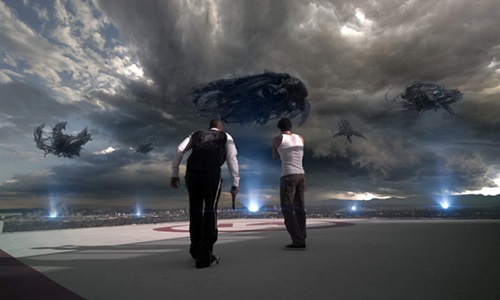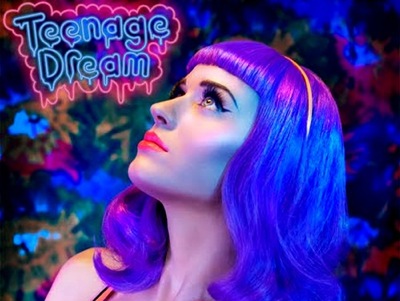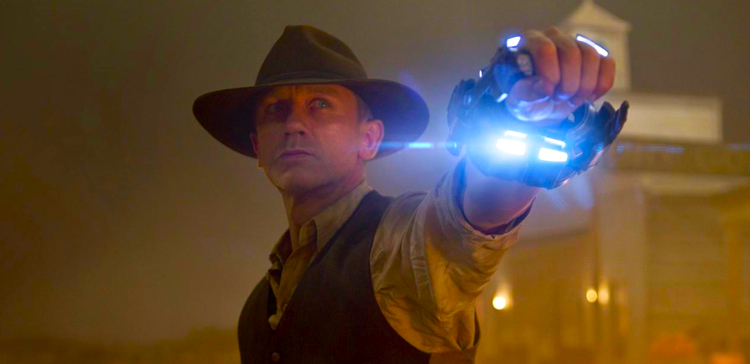
By Jason Apuzzo. Many thanks to the LA Times’ Patrick Goldstein for noticing what we’ve been talking about a lot here recently at LFM, namely the new trend toward alien invasion pictures – both of the Hollywood and indie variety. As I mentioned in my Hollywood news round-up from Tuesday, and have otherwise discussed on countless occasions here recently, we’re facing an interesting new wave of films that feature villainous aliens, communists and even space Nazis (!) in our midst.

The sheer number of major films following this trend is striking. On the alien invasion front, we’ve got Jon Favreau’s forthcoming Cowboys & Aliens with Harrison Ford and Daniel Craig; Battle: Los Angeles with Aaron Eckhart and Michelle Rodriguez; J.J. Abrams’/Steven Spielberg’s Super 8 (coming soon on the heels of Abrams’ Cloverfield); Oren Peli’s Area 51; the feature film remakes of The Thing and The Outer Limits; Robert Evans’ feature film remake of Gerry Anderson’s influential British TV series UFO; Spielberg’s forthcoming TV series Falling Skies; the ongoing alien invasion series V; Ridley Scott’s forthcoming reboot of the Alien franchise; the untitled Bobby Glicker-Michael Bay alien invasion flick that just got picked up by Paramount … and in the indie scene, there’s Skyline (to be released this fall by Universal), Gareth Edwards’ Monsters, Iron Sky (still in production) and The Mercury Men (the hotly anticipated web series that was just at Comic-Con) and a few others I know about in the pipeline. And really we shouldn’t forget the obvious recent examples of Avatar, the Transformers series and Predators, all of which involve intense warfare between humans and aliens.
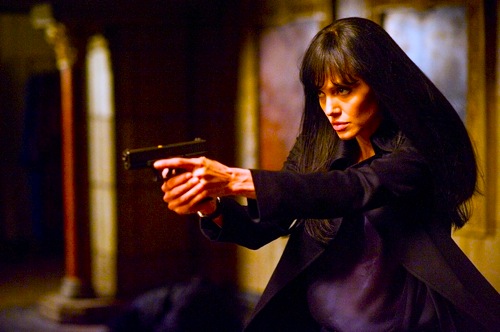
What’s interesting is how this trend toward alien invasion is being matched by a new trend toward communist invasion and/or infiltration scenarios. We just had the Angelina Jolie thriller about retro-communist sleeper agents in our midst, Salt (we loved it here at LFM); at some point in the fall or early next year we’re presumably going to get MGM’s Chinese communist invasion thriller Red Dawn; there’s the ambitious indie web series Red Storm; not to mention the recent Soviet espionage thriller Farewell (read our glowing review); and I even detect certain Cold War themes evident in things like the recent Karate Kid remake (set in communist China) and the forthcoming Mao’s Last Dancer. [In this context I should also mention Chris Gorak’s forthcoming alien invasion thriller The Darkest Hour, which is actually set in Moscow.]
I locate the beginning of this recent trend with Indiana Jones and the Kingdom of the Crystal Skull (a movie I loved, by the way) – which managed to feature both aliens and Soviet communist infiltrators, who are intent on using alien technology for mind-control purposes against the West.
So what’s going on here? Here’s what the LA Times’ Patrick Goldstein thinks:
This sudden obsession with alien invaders has me wondering: Why now? Trends usually happen for a reason, even if it isn’t always clear at the time what that reason might be. There were a host of similar alien invader films in the early-mid 1950s (my personal favorite being “The Thing”), which film historians theorize were inspired by fears of the U.S. being invaded, either physically or ideologically, by communism. If you get two film professors together and let ’em watch the original “Invasion of the Body Snatchers,” they’ll argue over the hidden meanings of the film for weeks on end.
But what’s up with all these new films? What new hidden fear do we have that is being sublimated into our movies? Glenn Beck, for one, seems almost grotesquely overwhelmed by fears of all sorts of hidden conspiracies, but I doubt that whatever is bugging him is the same thing that’s bugging this generation of filmmakers. Could the collapse of the economy have spooked so many Americans that it’s created an intense level of fear and unrest that is being channeled into film projects? And, of course, there’s always the possibility (WOO-HOO) that there really are a few aliens poking around, looking to abduct a few of us. I guess anything’s possible.
My own opinion, more or less along the lines Patrick describes, is that we are seeing a revival of the 1950’s anti-communist sensibility (Crystal Skull was even set in the 1950s) that’s getting sublimated into fantastical fears of domestic alien invasion. And I think all of this was more or less predictable, as our society gets increasingly re-engineered along progressive-liberal/pseudo-futuristic lines, and as we face an increasingly hostile and dangerous threat from nuclear-armed terrorists and/or their client states. What’s more, this trend is being super-charged by James Cameron’s recent revival of that old, stand-by technology that emerged directly from 1950s science fiction: 3D. One thinks here in this context of such 1950s 3D classics as It Came From Outer Space and Creature from the Black Lagoon.
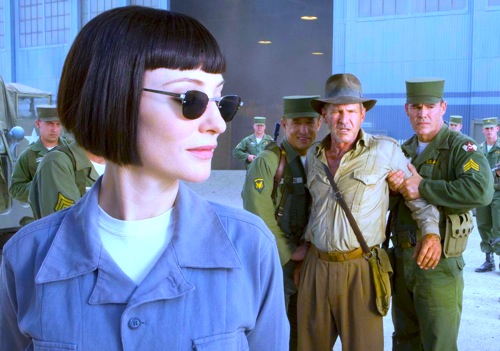
[I should mention, incidentally, that the best analysis of this 1950s anti-communist/alien invasion mentality certainly comes in Peter Biskind’s marvelous book, Seeing is Believing: How Hollywood Taught Us to Stop Worrying and Love the Fifties. Biskind goes into this stuff in great detail in close-readings of Them!, The Thing, Invasion of the Body Snatchers, It Came from Outer Space, etc. I can’t recommend Biskind’s book highly enough if you want to understand the mentality depicted in these films.]
And so ultimately this is a trend that I lustily endorse … with one proviso: pace this return to the 1950s sensibility, does this mean we can now go back to those optimistic bosoms and/or brassieres of that era? Because the problem with most of these films – Salt very much excluded – is that they just don’t have the 3D feminine firepower, so to speak, that they should. And even in Salt we never see Angelina in a dress! Which is really a crime.

But there’s more to be said about this revival of the 1950s/Cold War mentality, actually. I think the filmmaking world is gradually coming around to the side of freedom. It’s happening in fits and starts, and sometimes awkwardly – but it is happening. There’s no way that movies like Salt or Red Dawn or Four Lions or Mao’s Last Dancer or The Infidel would be getting made, otherwise. It’s something that we’re talking about all the time here at Libertas, and I think this is a trend very much to be celebrated. [We even just posted today about Frank Miller’s new project Holy Terror, which pits a superhero called ‘The Fixer’ against Al Qaeda baddies; this follows directly on the heels of Frank’s quasi-metaphorical look at the current War on Terror in the forthcoming Xerxes.]
So for every occasion nowadays when a Captain America or Wonder Woman get their patriotism downgraded by Hollywood censors (and, yes, censorship is what’s happening there), there are now counter-examples where freedom – and America’s role in promoting it – is being championed. And that’s a very positive sign.
Some of you, for example, may be wondering why we haven’t been harping on the latest scandals involving Oliver Stone or Roman Polanski here. The reason, in part, is because these guys are old and irrelevant and very much out-of-step with what’s going on in the filmmaking world right now. These trends that we’re talking about here toward invasion and/or infiltration scenarios are major trends that are affecting what projects get funding at the moment – particularly among the younger, more active crowd of filmmakers.
And so on with the invasion! Just don’t forget the brassieres.
Posted on July 29th, 2010 at 2:54pm.



